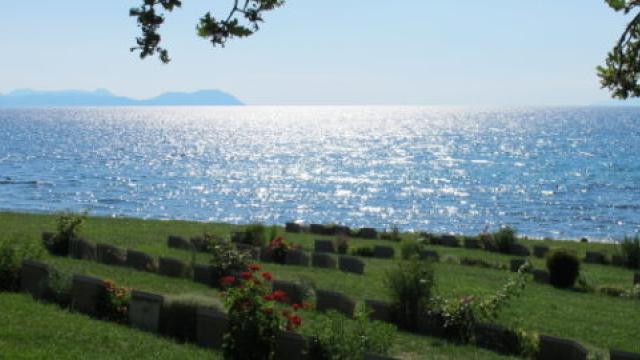Why does the Anzac legend continue to captivate Australians? In the lead up to the Centenary of the Gallipoli landing, Russell Crowe’s feature length movie 'The Water Diviner' was screened in cinemas across the world. The film claims to be inspired by ‘true events’, retraces the steps of the first pilgrim across the Gallipoli battlefields and grapples with one of Australia’s most enduring foundation narratives. But is it fact, or fiction? And how can it be used as a teaching device to better understand the allure of Anzac today. Join historians on a bold exposé of the myths behind ‘The Water Diviner’.
The history behind 'The Water Diviner'
The following article first appeared as "The History Diviners: Monash Scholars Explore the History Behind ‘The Water Diviner’", April 23, 2015 on Monash University Arts Online, and is republished with permission.
As The Water Diviner is released on commercial television and premieres in Los Angeles, researchers at Monash University reveal the identity of the film’s central character.
Russell Crowe’s film retraces the footsteps of a grieving father who travels across Turkey, desperate to find his missing sons. It claims to be based on true events, and tells the story of one of the first Australian pilgrimages to the Anzac battlefields in Gallipoli.
Monash University historian Professor Bruce Scates and his doctoral student, Rebecca Wheatley, have spent years charting early Australian journeys to battlefields overseas. An exhaustive search of archival sources, letters, diaries and travel journals has uncovered the identity of a farmer from Victoria who makes his way to the Gallipoli Peninsula within 18 months of the war ending.
“It’s a remarkable journey,” said Professor Scates, Director of the National Centre for Australian Studies. “It not just the cost of getting there—a journey like that would have cost a year’s wages back then—or the almost impossible task of identifying the dead on the killing fields of Anzac,” Professor Scates said. “The fact of the matter is that the cemeteries were not completed until well into the 1920s and pilgrimages were prohibited until then. Gallipoli was a difficult and dangerous place to visit."
Ms Wheatley said the film takes many liberties with history but that was only to be expected of so epic a production.
“Even so, it provides a compelling perspective on the grief of a generation and reminds us of the loss that war meant to Australia, Turkey and all the nations that fought there,” she said.
Monash University has prepared a brief film clip showcasing a rare Australian photo album detailing some of the earliest journeys to Gallipoli.
“It abounds with image of a landscape we have lost,” Professor Scates said.
“It reminds those journeying to Anzac today of the ordeals and experiences of the first generation of Gallipoli travellers. The clip guides viewers through a maze of archival sources to arrive at the identity of a man until now hidden from history.”
Ms Wheatley said they hoped their work would provide a sense of context to anyone viewing the film.
“Hopefully it will remind everyone, on the centenary of the landing, that the cost of war is not just borne by soldiers,” she said.
“The burden of bereavement falls on their families and loved ones and affects a whole community.”

